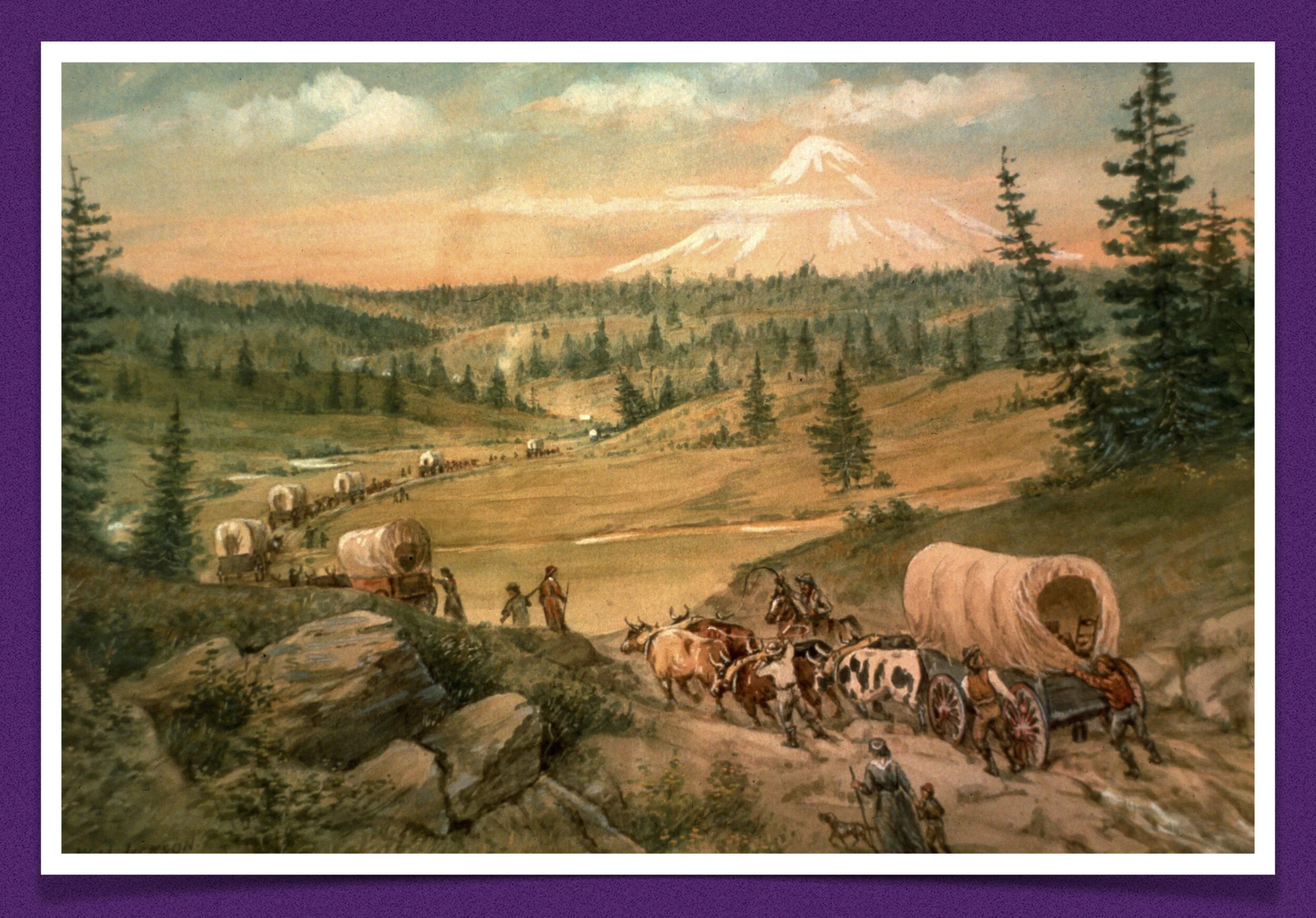
Literature
Central Coast Gallery Walk
Station Three: Westward Expansion
Manifest Destiny
Not long after the United States gained its independence from Great Britain, the young country started looking west to expand. In its peace treaty with Britain, the US gained land all the way to the Mississippi River and would subsequently double in size with the Louisiana Purchase. However, the ever-expansionist outlook of both the American people and government would not stop there. In the early nineteenth century, the United States laid claim to the Oregon Country and would also look to the sparsely populated northern territories of New Spain, and later Mexico as ideal locations for American expansion.
Heading Into the West
Americans often traveled from one place to another by boat along rivers and lakes. People often used flatboats. A flatboat is a boat that has a flat bottom. Lewis and Clark used rivers to explore the new land from the Louisiana Purchase. Army forts were also build along rivers.
As the country grew, the economy had to grow, too. The government used tariffs to pay for things like roads and canals. The government also helped businesses.
Technology made it easier and faster to travel. Robert Fulton built the Clermont. This was a boat powered by a steam engine. New York built the Erie Canal. This completed the waterway between New York City and the Great Lakes. The National Road was the nation’s first road. It went from Cumberland, Maryland, to the Ohio River at Wheeling, Virginia.
Movement Changes the West and the Nation
Life in the West was very difficult. People had to work hard to get the land ready for farming and business. Even so, people went to the West in great numbers. Moving to the West changed the nation.
“It was a whole bunch of people made into one big crawling beast. And I was the head. It was westering and westering. Every man wanted something for himself, but the big beast that was all of them only westering.”

